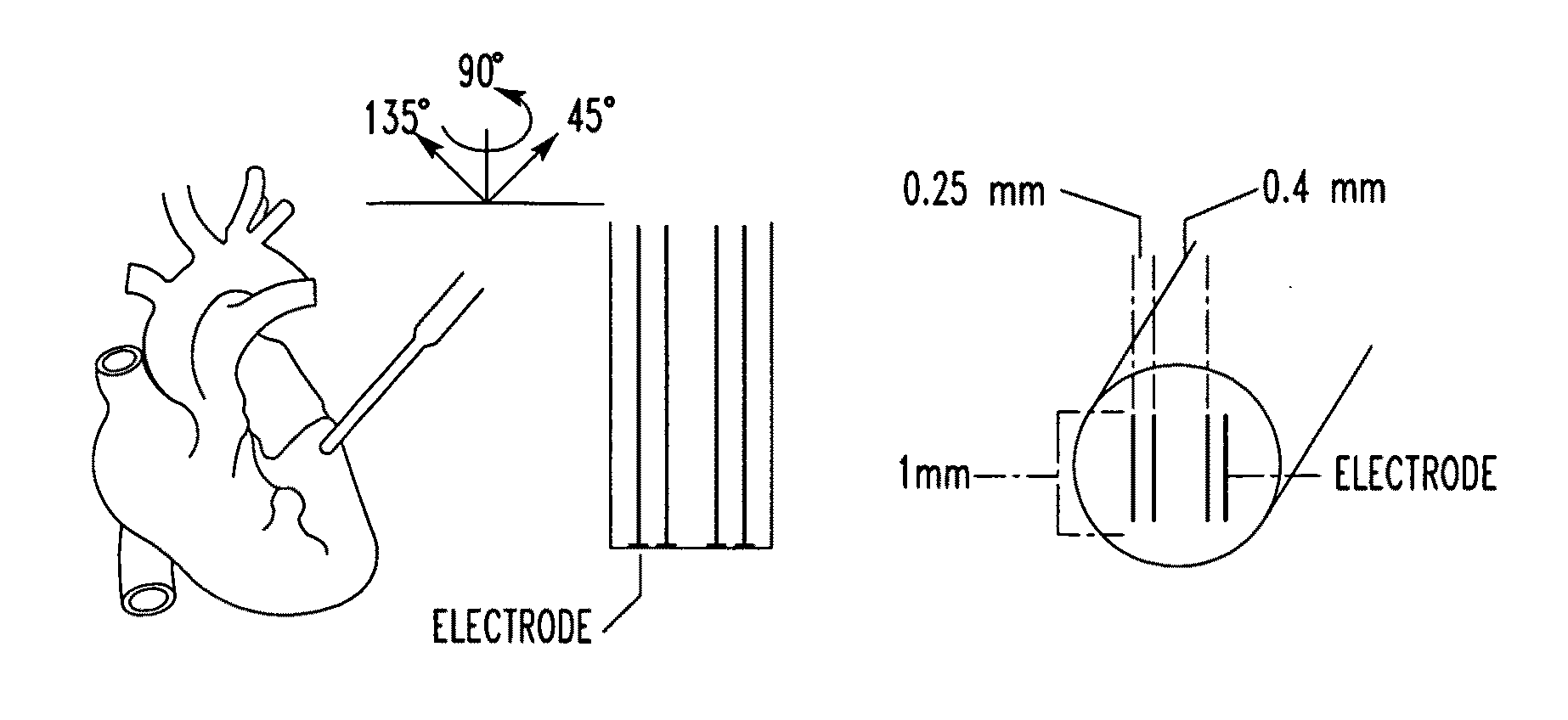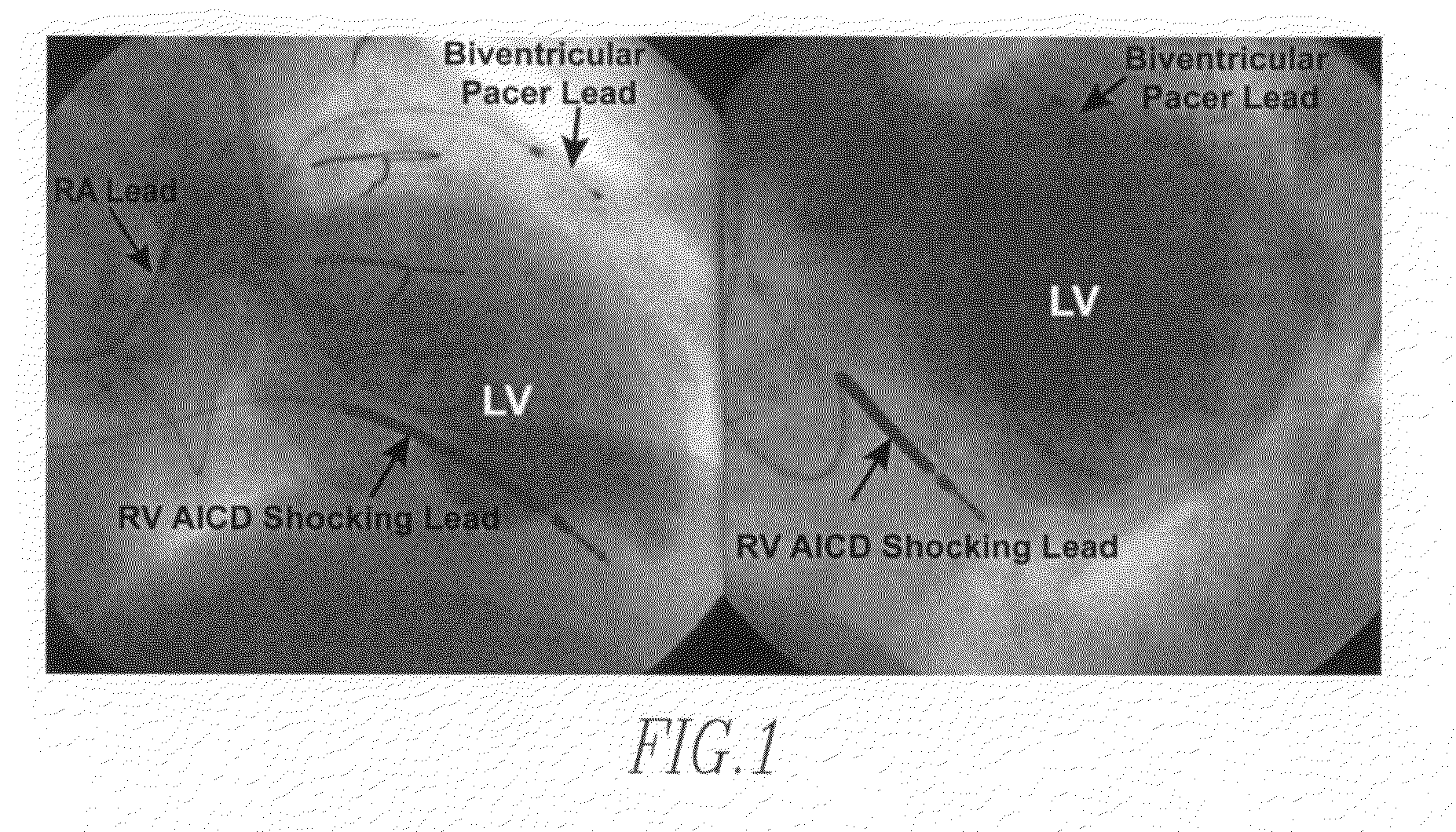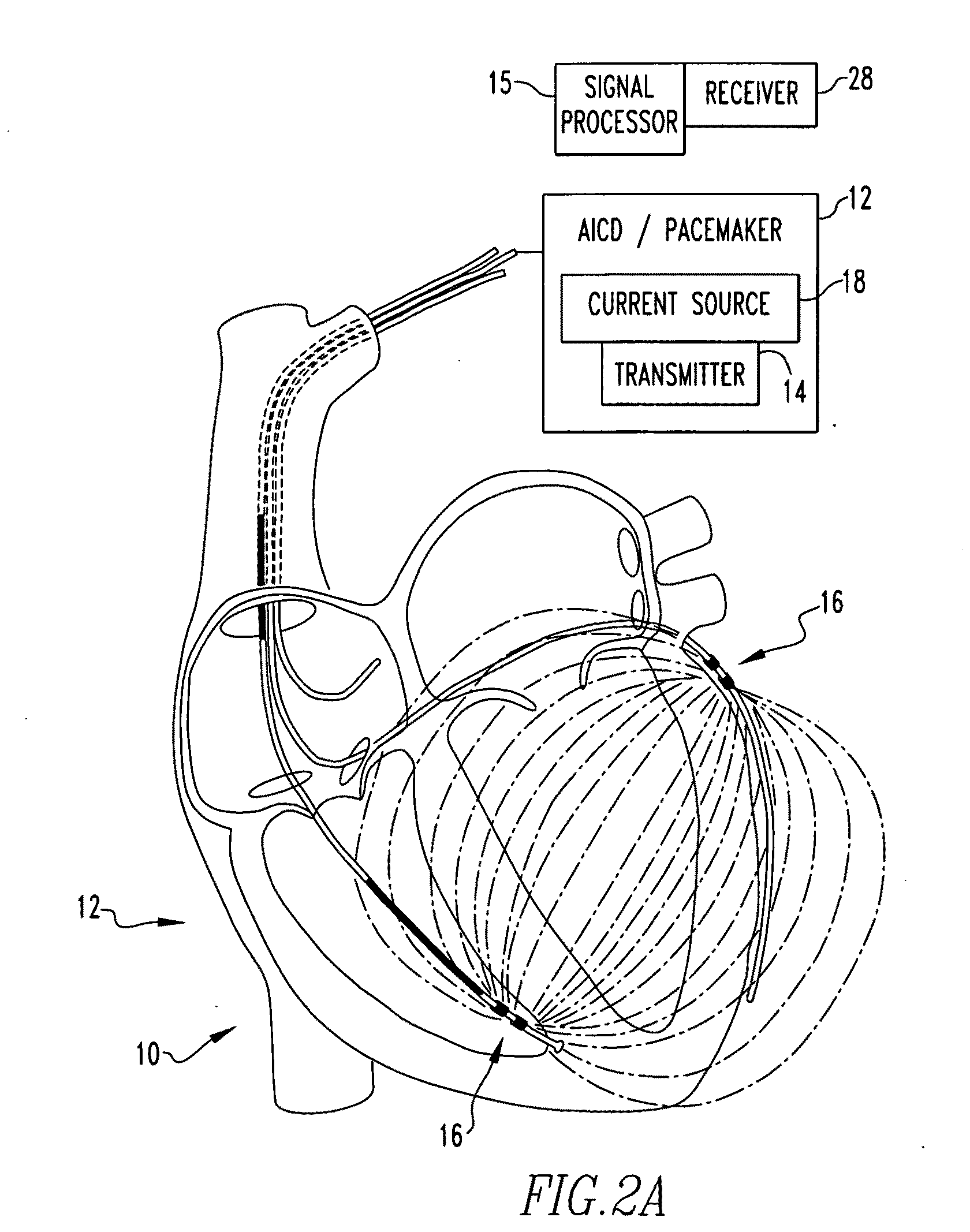Method and apparatus for monitoring an organ of a patient
a technology for monitoring organs and patients, applied in the direction of catheters, angiography, therapy, etc., can solve the problems of limited conductance technique, less robust measurement, and no proposed technology for chronic left ventricular volume measurements
- Summary
- Abstract
- Description
- Claims
- Application Information
AI Technical Summary
Benefits of technology
Problems solved by technology
Method used
Image
Examples
Embodiment Construction
[0065]Referring now to the drawings wherein like reference numerals refer to similar or identical parts throughout the several views, and more specifically to FIGS. 2a and 2b thereof, there is shown an apparatus 10 for determining tissue versus fluid components of an organ. The apparatus 10 comprises a detector 12 that generates a detector signal based on electrical signals derived from tissue and fluid. The apparatus 10 comprises a signal processor 15 in communication with the detector 12 which subtracts in real time a tissue component from the detector signal and produces a fluid volume signal.
[0066]The detector 12 may include a plurality of electrodes 16 adapted to contact the organ that produce a combined signal that has the tissue component and a fluid component. The electrodes 16 may have a varying distance between them and the processor 15 determines organ surface admittance based on the vary distance between the electrodes 16. The organ may be a heart, the fluid is blood, th...
PUM
 Login to View More
Login to View More Abstract
Description
Claims
Application Information
 Login to View More
Login to View More - R&D
- Intellectual Property
- Life Sciences
- Materials
- Tech Scout
- Unparalleled Data Quality
- Higher Quality Content
- 60% Fewer Hallucinations
Browse by: Latest US Patents, China's latest patents, Technical Efficacy Thesaurus, Application Domain, Technology Topic, Popular Technical Reports.
© 2025 PatSnap. All rights reserved.Legal|Privacy policy|Modern Slavery Act Transparency Statement|Sitemap|About US| Contact US: help@patsnap.com



